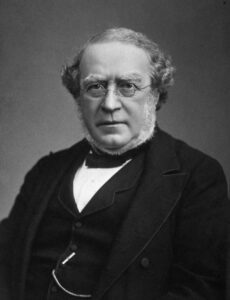 From the first substantial argument in the 19th century that uric acid played a role in gout, it took about 100 years for the medical community to accept its role in triggering acute inflammatory gout attacks. Two papers, both published in 1962, helped demonstrate the link between uric acid and acute gout attacks, quickly opening the way for successful treatment with urate-lowering therapies.1,2
From the first substantial argument in the 19th century that uric acid played a role in gout, it took about 100 years for the medical community to accept its role in triggering acute inflammatory gout attacks. Two papers, both published in 1962, helped demonstrate the link between uric acid and acute gout attacks, quickly opening the way for successful treatment with urate-lowering therapies.1,2
Historical Background
Known to the Egyptians and the Greeks, gouty arthritis was one of the first diseases to be recognized as a distinct clinical entity. Dutch pioneer of microscopy Antonie van Leeuwenhoek was the first to describe the appearance of crystals from a gouty tophus in 1679, although the chemical composition was then unknown.3 In 1797, the English chemist William Hyde Wollaston, MD, demonstrated the presence of uric acid in gouty tophi, providing some of the earliest evidence of a possible pathophysiologic connection between high uric acid levels and gout.1
Garrod’s Work
In 1854, English physician Alfred Baring Garrod, MD, described the famous thread test that he had developed—a semi-quantitative method for measuring the uric acid in blood or urine. Using it, he demonstrated that most of his gouty patients were hyperuricemic.1 Through research and his extensive clinical experience, Dr. Garrod came to believe that deposited urate crystals triggered the inflammation response in gouty inflammation.

Dr. Garrod
Dr. Garrod also carefully distinguished the characteristics of gout from rheumatoid arthritis—then termed rheumatism—arguing the two had distinct clinical presentations and underlying disease processes that did not morph into one another. In his mammoth 1876 treatise on the subject, Dr. Garrod noted the following as part of his key characterizations of gout:
Uric acid … is invariably present in the blood in abnormal quantities. … True gouty inflammation is always accompanied by a deposition of urate of soda in the inflamed part. … The deposit is crystalline and interstitial. … The deposited urate of soda may be looked upon as the cause, not the effect of the gouty inflammation. … In no disease but true gout is there a deposition of urate of soda in the inflamed tissues.4
However, many did not accept this explanation, and the clinicians of the time continued to debate gout’s cause. In 1899, a young Swiss internist, Max Freudweiler, MD, outlined the debate of the time. He noted that Garrod’s followers believed the oversaturation of body fluids led to the deposition of crystalline uric acid salts into the tissues.

